How to Install an 115X Intel Processor
Ron Perillo / 6 years ago
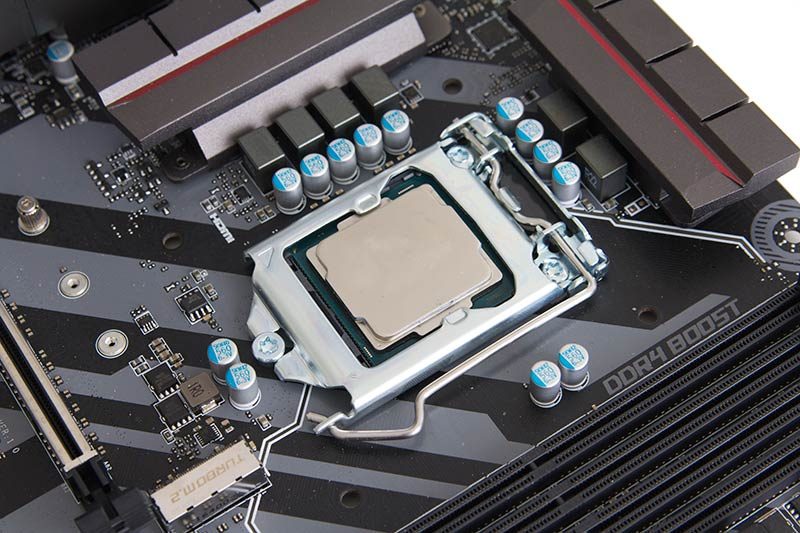
Every user who has built their own PC started somewhere. It might be overwhelming at first, but once you get the hang of it, PC assembly is actually quite easy. This guide serves as a basic starter help for those who have not put together their own PC before. Specifically, it covers the topic of processors and how to install it on a motherboard. This one specifically deals with installing Intel processors. We also have a separate article that covers AMD processor installation.
Intel currently uses two different sockets: LGA1151 (Socket H4) and LGA2066 (Socket R4). LGA1151 is for their mainstream platform and will be covered here. The LGA2066 socket installation is for their high-end desktop platform and will not be covered here as those are more for advanced users. The same principle still applies, so once you get the hang of installing a mainstream desktop processor on a motherboard, you should be more than able to install one on a high-end system.
If you are looking for a guide for installing AMD desktop processors, you can follow this link.
Intel Socket Type
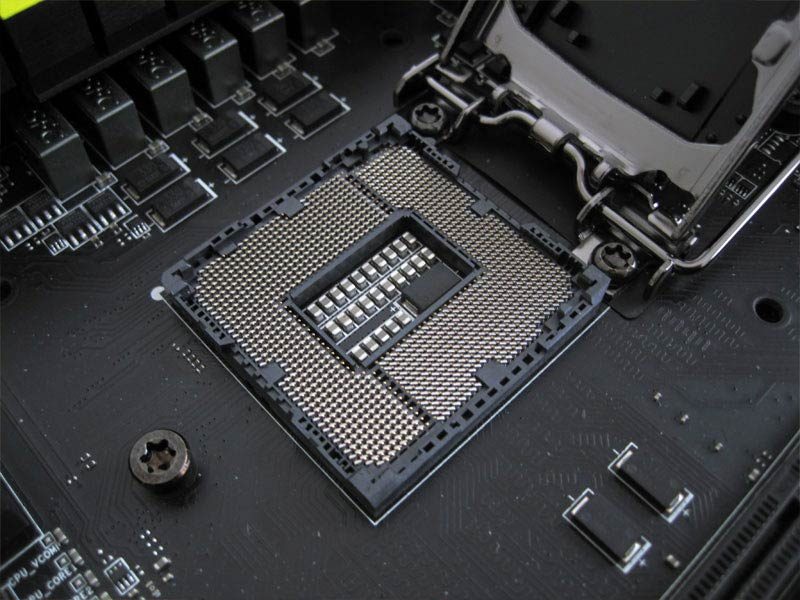
Intel Processors on the other hand use what is called LGA type socket. LGA stands for Land Grid Array. Unlike on AMD’s PGA-ZIF, the pins or brushes are on the motherboard socket. The underside of the processor has grids of contacts on a circuit board instead. These line-up to match the contact grid on the board. It is not a zero insertion force socket, which is why it has a mechanism holding down the processor in place on the socket. LGA sockets come with a plastic covering of some sort to protect the pins from damage. They are more easily damaged than PGA since the pins (called brushes) are smaller. Which is why it is important to keep the cover in place at all times before installing a processor.
Intel Processor Installation
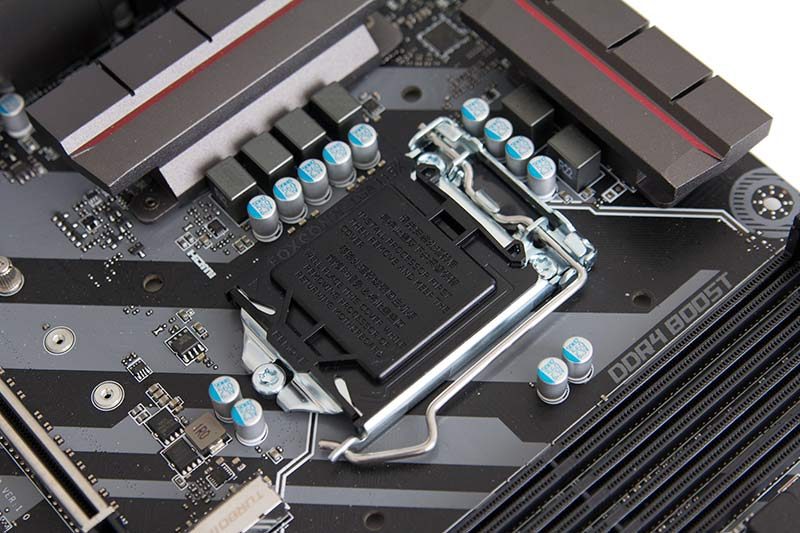
There are two types of LGA socket covers. One goes at the top of the metal locking mechanism and one goes under. The one that goes on top is the most common type now, as it allows users to install the processor without removing the cap first, ensuring that the pins have a cover all the time. The other cover type is more common on older motherboards, and the locking mechanism has to be lifted up first in order to remove this cover. This guide shows the more common cover type.
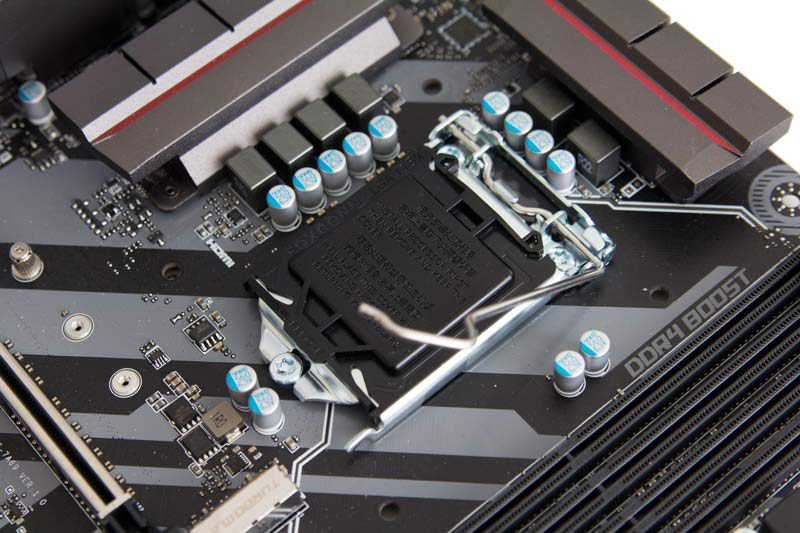
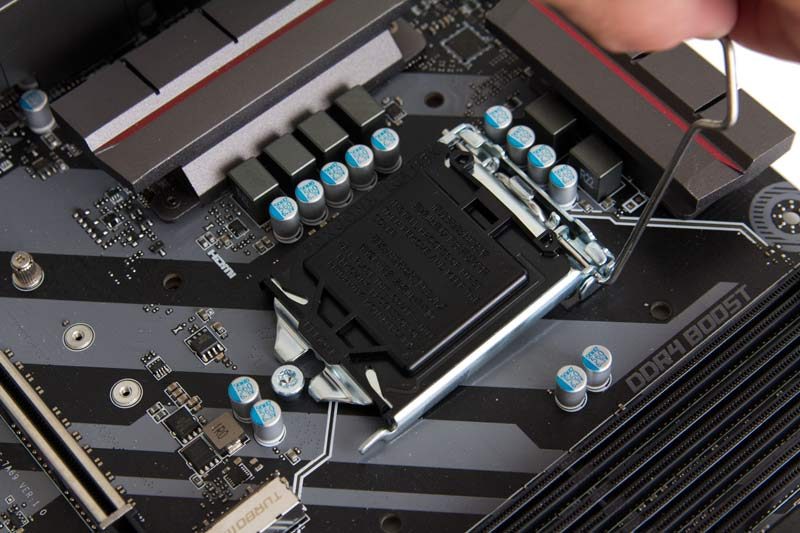
1.) Move the lever up away from the locking position. The socket locking mechanism will follow if the lever is pushed as far back as possible.
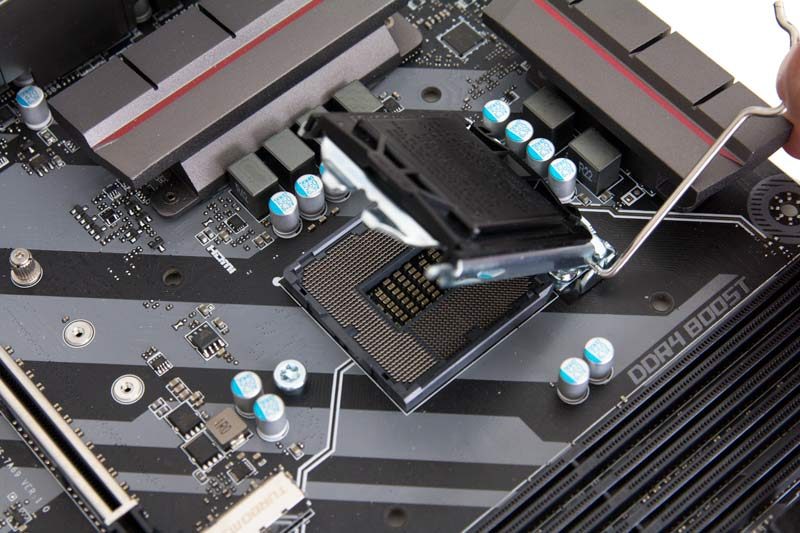
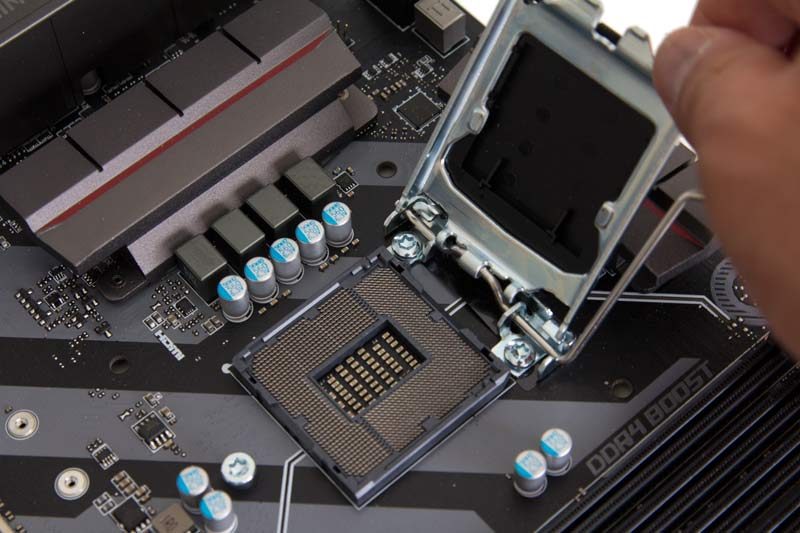
2.) Once the locking mechanism is lifted up a bit, push it all the way back.
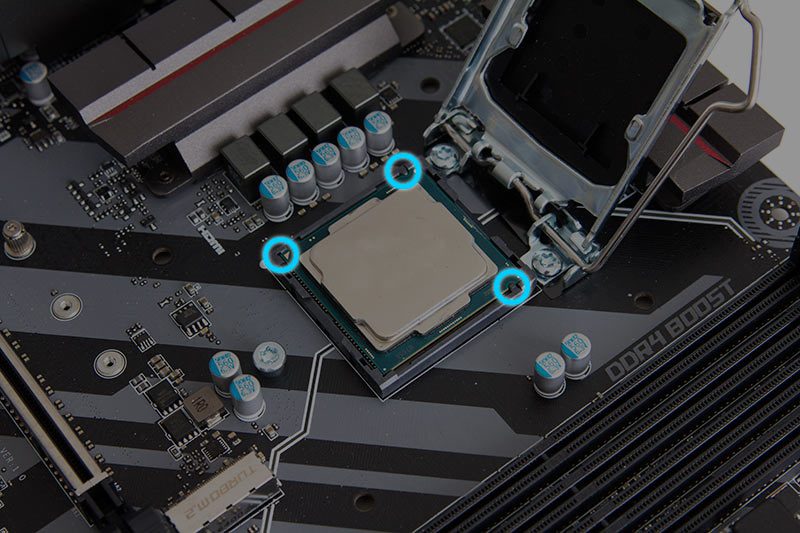
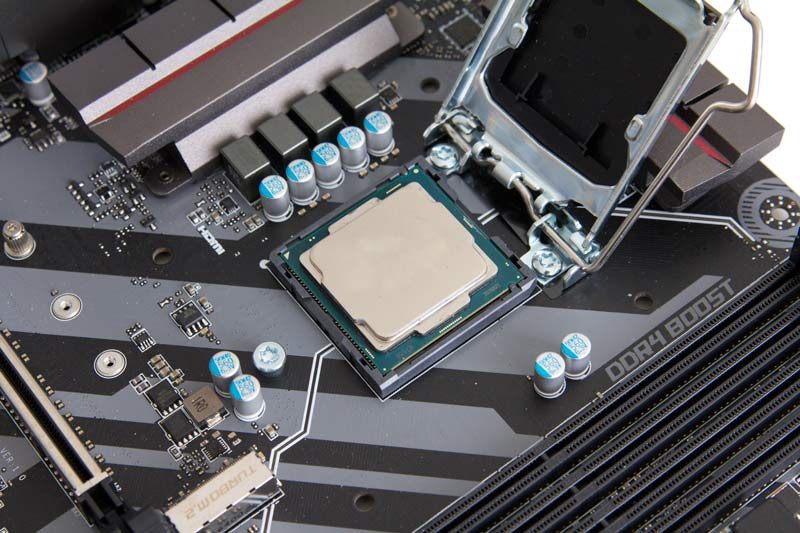
3.) Lineup the processor with the socket. There is a triangle in the lower corner, it should match with the triangle on the corner of the socket as well. The edges of the processor also have two dots on the sides which serves as a guide for proper orientation. It is practically impossible to mount the processor incorrectly if all positioning guides are in place.
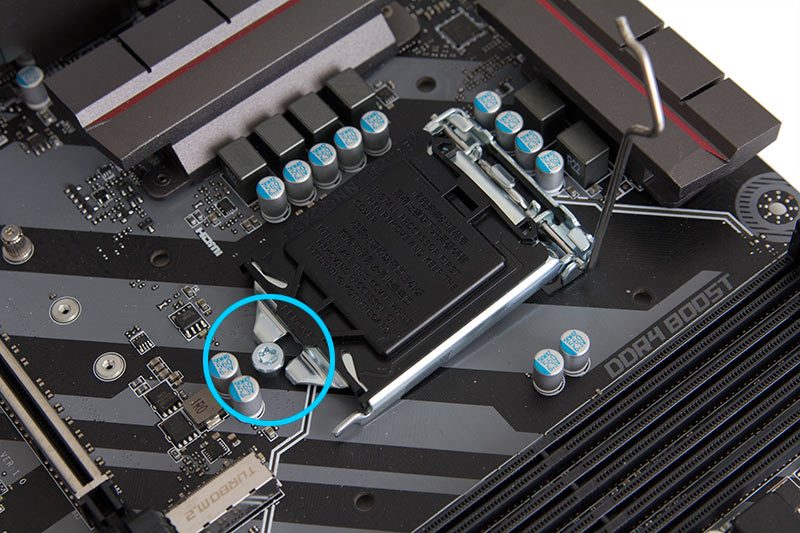
4.) Position the locking mechanism down with the cap still in place. Make sure the part highlighted in blue above goes underneath the bolt head, not above.
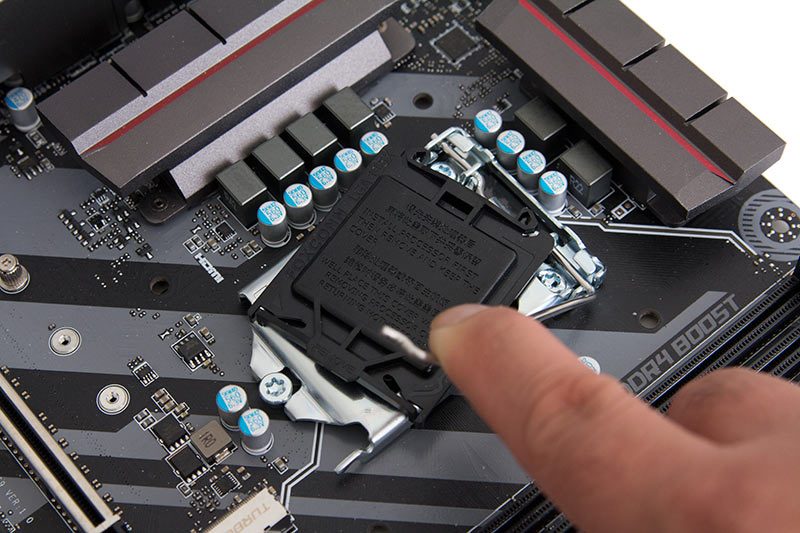
5.) Pull down the lever to lock it into place. There will be some resistance, but this is completely normal. As long as the CPU is in the proper position there will be no issues. The cap will pop off automatically once the lock is engaged.

6.) Fully lock the lever back into the original position it was in. The processor should be installed now and is ready for the heatsink installation.



















